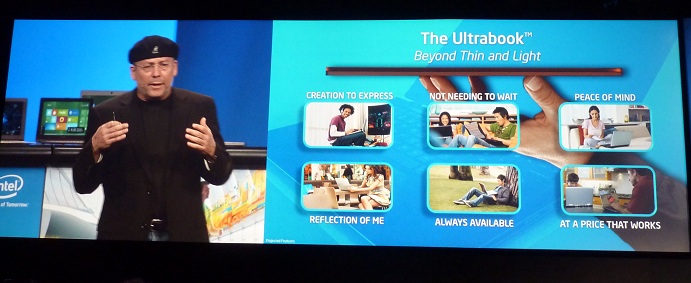x86 is alive and kicking

The talk of the tech town in the last few years has centred on smartphones and tablet computers. Apple is overtly present in both markets, while Intel, a manufacturing giant, is conspicuously absent.
But Mooley Eden, Intel VP of the PC client group, kicked off his keynote speech at IDF 11 by reminding gathered attendees that the Intel Architecture ISA is alive and well. Indeed, IA chip shipments are increasing year-on-year, with much of the growth occurring in emerging markets. "China is now the world's largest consumer of PCs and Brazil has jumped to position three," he said.
The next iteration of Intel microarchitecture is Ivy Bridge, due to be released in H1 2012. Eden said that Ivy Bridge is "more than a tick (a process compaction, to 22nm), it's a tick-plus", meaning it adds in significant additional performance, particularly for integrated graphics, and enhanced power-saving technologies when compared to incumbent Sandy Bridge. We took a high-level look at the architecture here.
The Ultrabook
Having cutting-edge CPUs isn't enough; Apple has shown that by releasing compelling products - not components, caches and cores. Now, Intel is helping to put a face on its technology by fostering a new form of notebook called the Ultrabook.
To be released by partners such as Lenovo and ASUS, Ultrabooks are to use ultra-low-voltage Core chips housed in laptop chassis with super-slim form factors. Expected to measure less than one inch at the thickest point and weigh 1-1.5kg, Intel is putting considerable weight behind its laptop-manufacturing partners.
Indeed, Intel has a $300m Ultrabook war chest, set aside to support partners in bringing these Ultrabooks to market and, over a short space of time, to drive down the cost from the expected $1,000 launch price.
Eden then teased the audience by showing an Ivy Bridge-powered Ultrabook and, finally, a PC running a Haswell chip - the follow-on architecture to Ivy Bridge, due to see the light of day in 2013.
Summary
Intel is looking for novel, new ways in which to persuade purchasers to invest in x86 chips. Rather than focus on the technology itself, the chip firm aims to stimulate further demand by helping to bring a new category of notebook to market. Ultrabooks, it seems, are here to stay. The question we need to answer is whether you need one.













